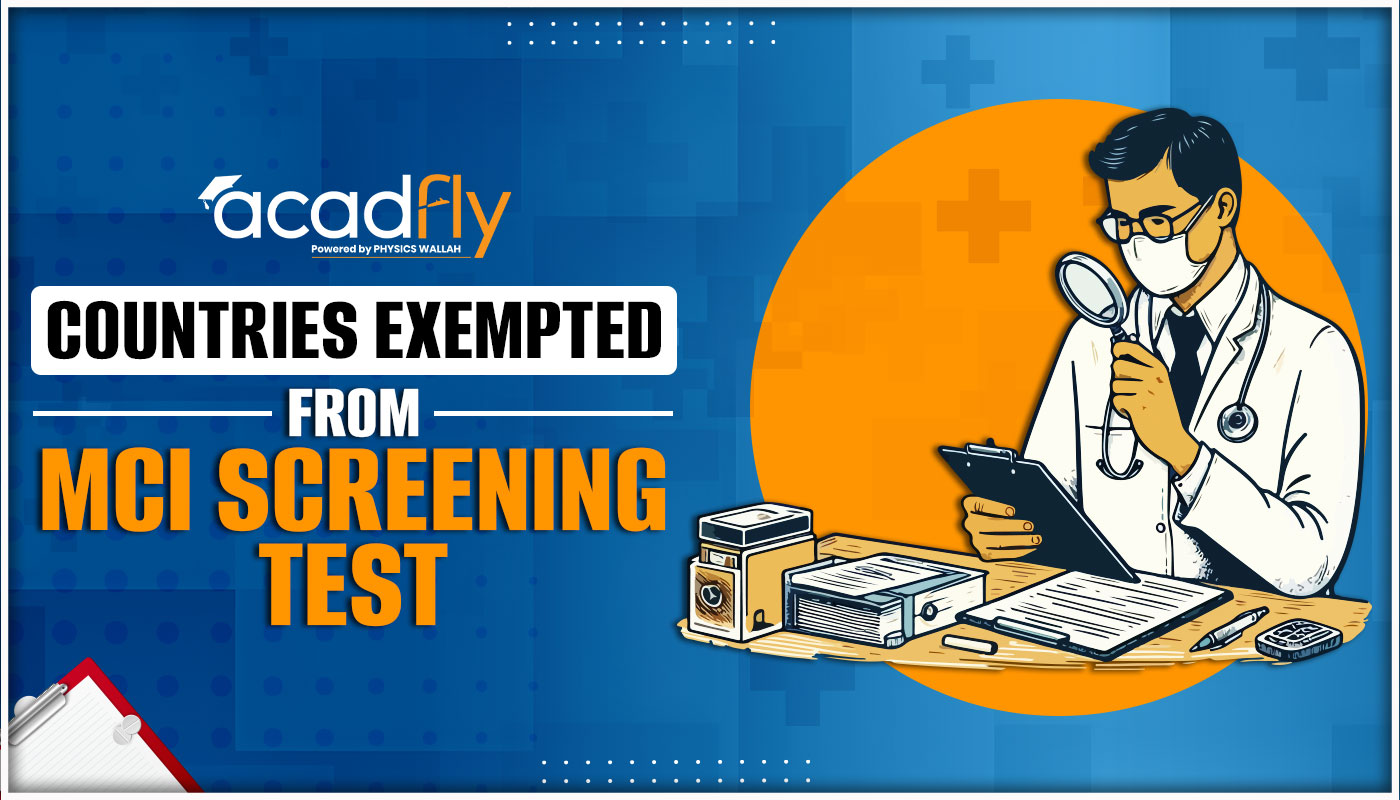
MBBS in India vs. MBBS abroad: If you are a student who wants to pursue a medical career, you may be wondering whether to study MBBS in India or abroad. This is a crucial decision that can have a significant impact on your future prospects, opportunities, and satisfaction. Therefore, it is important to weigh the pros and cons of both options and choose the one that suits your personal goals, preferences, and budget.
In this article, we will compare and contrast the advantages and disadvantages of studying MBBS in India and abroad. We will also discuss the eligibility criteria, admission process, curriculum, teaching methods, clinical rotations, internships, career opportunities, and return on investment of both options. By the end of this article, you will have a better understanding of the differences and similarities between MBBS in India and abroad, and you will be able to make an informed decision for your medical education.
Pros and Cons of Studying MBBS in India
Studying MBBS in India is a popular choice for many students who want to become doctors in their own country. India has a large number of medical colleges, both government and private, that offer quality education and training. However, studying MBBS in India also comes with some challenges and drawbacks that you should be aware of. Here are some of the pros and cons of studying MBBS in India.
Pros and Cons of Studying MBBS in India |
|
|---|---|
|
Advantages |
Disadvantages |
|
Quality of Education: High-ranking institutions like AIIMS, JIPMER, and AFMC offer excellent academic and clinical exposure. |
Intense Competition: Very tough entrance exams like NEET, with lakhs of aspirants for few seats. |
|
Lower Cost: Government colleges have significantly lower tuition and living expenses compared to studying abroad. |
Infrastructure Challenges: Some colleges, especially private ones, have poor infrastructure and outdated equipment. |
|
Familiarity with Local Healthcare System: Understanding of local diseases, healthcare practices, and better communication with patients. |
Social Pressure: High expectations from society, pressure to perform well academically and secure a good job. |
|
Cultural Continuity: Students can remain within their cultural and family support systems, easing the transition into professional life. |
Resource Limitation: Limited access to international journals, conferences, and global networking opportunities. |
|
Clinical Exposure: Opportunities to deal with a high volume of patients and a wide variety of cases. |
Curriculum Rigidity: Less flexibility in choosing electives or specializing in niche areas of medicine. |
Pros and Cons of Studying MBBS Abroad
Studying MBBS abroad is another option for students who want to pursue a medical career. There are many countries, such as the USA, UK, Canada, Australia, Germany, Russia, China, etc., that offer MBBS or equivalent courses to international students. Studying MBBS abroad can provide many benefits and opportunities, but it also has some challenges and risks that you should consider. Here are some of the pros and cons of studying MBBS abroad:
|
Pros and Cons of Studying MBBS Abroad |
|
|---|---|
|
Advantages |
Disadvantages |
|
Global Exposure: Opportunity to experience diverse cultures, lifestyles, and medical practices, enhancing global outlook. |
Higher Costs: Significantly higher tuition, living expenses, and additional costs such as travel and insurance. |
|
Quality Education: Access to renowned and accredited universities with world-class facilities, resources, and updated curricula. |
Adaptation Challenges: Issues like language barriers, homesickness, and cultural adjustments in a new environment. |
|
Better Infrastructure: Modern labs, libraries, and clinical exposure to the latest technologies and research in medicine. |
Licensing and Recognition: Difficulties in getting recognized to practice in India, requiring additional exams like FMGE or PLAB. |
|
International Networking: Opportunities to build global connections with professionals and peers in the medical field. |
Financial Burden: Potential debt from loans or the need for scholarships to fund education abroad. |
|
Enhanced Competence: Hands-on experience and training in advanced medical practices and technologies. |
Cultural Sensitivity: Risk of facing discrimination or bias, impacting mental health and academic performance. |
|
Research Opportunities: Access to cutting-edge medical research projects and collaborations with leading health experts. |
Professional Integration: Challenges in integrating into the Indian healthcare system after studying abroad. |
Eligibility Criteria and Admission Process
The eligibility criteria for MBBS programs involve a combination of age, educational background, and entrance exam scores, such as NEET. The admission process typically includes application submission, entrance exam performance, and sometimes, interviews or additional tests. Prospective students must also meet language proficiency and medical fitness requirements.
|
Eligibility Criteria and Admission Process |
||
|---|---|---|
|
Criteria |
MBBS in India |
MBBS Abroad |
|
Age Limit |
Minimum age of 17 years by 31st December of the year of admission. |
Same as MBBS in India |
|
Educational Qualification |
Completion of 10+2 or equivalent with Physics, Chemistry, Biology/Biotechnology, and English. Minimum aggregate marks (usually 50% for general category and 40% for reserved categories) in PCB. |
Completion of 10+2 or equivalent with Physics, Chemistry, Biology, and English. Requirements for minimum marks can vary significantly. |
|
Entrance Exam |
National Eligibility cum Entrance Test (NEET) is mandatory for all candidates. |
Some countries require their own entrance exams (e.g., MCAT in the USA, BMAT or UKCAT in the UK). Others may accept NEET scores or not require an entrance exam at all. |
|
English Proficiency |
Not required for Indian nationals. |
No additional test is required but having good command over english will be beneficial. |
|
Medical Fitness |
Medical certificate proving fitness. |
Medical certificate proving fitness, specific health requirements may vary. |
|
Citizenship |
Indian citizens or Overseas Citizen of India (OCI) for seats reserved for Indian nationals. |
International students must have a valid passport and sometimes a student visa. |
|
Additional Requirements |
Some institutions may have additional criteria such as state domicile requirements. |
Some countries require certification of equivalency for high school education, background checks, and sometimes, proof of financial stability. |
Curriculum and Teaching Methods
The MBBS curriculum is designed to cover basic sciences, clinical skills, and hands-on training through internships or clinical rotations. Teaching methods range from traditional lectures and seminars in India to problem-based learning and case studies abroad. Both approaches aim to equip students with essential medical knowledge, practical skills, and professional competencies.
|
Curriculum and Teaching Methods |
||
|---|---|---|
|
Aspect |
India |
Abroad |
|
Teaching Methods |
Traditional classroom-based teaching, including lectures, seminars, and tutorials. Emphasis on learning from teachers and textbooks. |
Emphasis on problem-based learning, case studies, and practical exposure. Students learn from real-life scenarios and are actively involved in group discussions, presentations, and projects. |
|
Curriculum Content |
Syllabus prescribed by the Medical Council of India (MCI), covering basic and clinical subjects like Anatomy, Physiology, Biochemistry, Pathology, Pharmacology, Medicine, Surgery, etc. |
Syllabus designed by the respective university, covering core and elective subjects such as Molecular Biology, Genetics, Immunology, Neuroscience, Public Health, etc. |
|
Assessment |
Students are assessed through theory and practical exams at the end of each year or semester. |
Continuous evaluation and feedback, with assessments based on participation in group discussions, presentations, and projects. |
|
Duration |
5.5 years, including 4.5 years of academic study and 1 year of compulsory internship. |
Varies from 4 to 6 years, depending on the country and course. In some countries like the USA and Canada, a pre-medical bachelor’s degree is required, adding another 3 to 4 years to the duration. |
Clinical Rotations and Internships
Clinical rotations and internships are an integral part of the MBBS course, as they provide the students with the opportunity to apply their knowledge and skills in real-world settings. The clinical rotations and internships for studying MBBS in India and abroad are as follows:
|
Clinical Rotations and Internships |
||
|---|---|---|
|
Aspect |
India |
Abroad |
|
Timing and Duration |
A one-year compulsory internship after completing academic studies. |
Clinical rotations during the course, usually in the third and fourth years. |
|
Structure |
Divided into various departments like Medicine, Surgery, Obstetrics and Gynecology, Pediatrics, Orthopedics, etc. Students work under the supervision of senior doctors. |
Divided into core and elective rotations, allowing students to choose specialties and locations of interest. Rotations are conducted in hospitals, clinics, and health centers. |
|
Location |
Typically done in the same college or hospital where the student is enrolled, or in a nearby government hospital. |
Usually done in the same country as the university, or internationally if there are tie-ups or exchange programs. |
|
Evaluation |
Students maintain a logbook of activities and experiences for evaluation and certification. Must clear the final university or MCI exam to obtain the MBBS degree. |
Students submit a portfolio of their work for feedback and grades. Must clear licensing exams of the respective country or region to obtain the MBBS or equivalent degree. |
Career Opportunities and Return on Investment
Career opportunities and return on investment are the main factors that influence the decision of studying MBBS in India or abroad. The career opportunities and return on investment for studying MBBS in India and abroad are as follows:
|
Career Opportunities and Return on Investment |
||
|---|---|---|
|
Aspect |
India |
Abroad |
|
Career Opportunities |
- Doctor in government/private hospitals, clinics, health centers. - Join armed forces/public health services. - Higher education/specialization in India/abroad. - Research or teaching. - Start own practice/venture. |
- Doctor in the same/different country. - Residency or fellowship programs. - Higher education/specialization in the same/different country. - Research or teaching. - Start own practice/venture. |
|
Return on Investment |
- Salary Range: Rs. 50,000 to Rs. 2,00,000 per month. - Tuition Fees: Rs. 10,000 to Rs. 50,00,000 per year. - ROI depends on college, specialty, location, experience, demand. |
- Salary Range: $50,000 to $300,000 per year. - Tuition Fees: $10,000 to $100,000 per year. - ROI varies by country, university, specialty, location, experience, demand. |
Studying MBBS in India or abroad is a personal choice that depends on your goals, preferences, and budget. Both options have their own pros and cons, and you should weigh them carefully before making a decision. You should also do thorough research and consult experts and seniors before applying to any college or university. You should also be prepared to face the challenges and opportunities that come with studying MBBS in India or abroad and strive to achieve your dreams and aspirations.
If you are looking for a one-stop solution for all your MBBS abroad requirements, you can contact AcadFly team, a leading educational consultancy that provides end-to-end services for students who want to study MBBS abroad. We assist you from admission to accommodation and help you choose the best country, university, and course for your medical education. We also provides guidance and support for the entrance exams, visa process, documentation, travel arrangements, and post-admission services. With AcadFly, you can fulfill your dream of studying MBBS abroad without any hassle or worry.
MBBS in India vs. Abroad FAQs
Which is better: MBBS in India or MBBS abroad?
Is MBBS abroad valid in India?
What is the cost difference between MBBS in India and MBBS abroad?
Do I need NEET to study MBBS abroad?
What are the challenges of studying MBBS abroad?
Which countries are best for MBBS abroad for Indian students?









